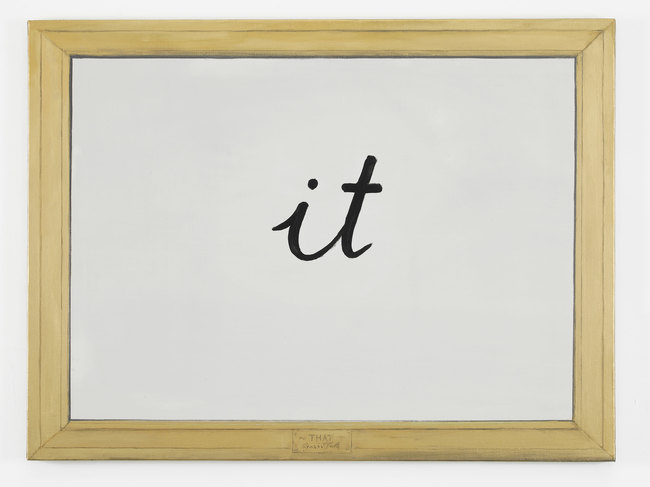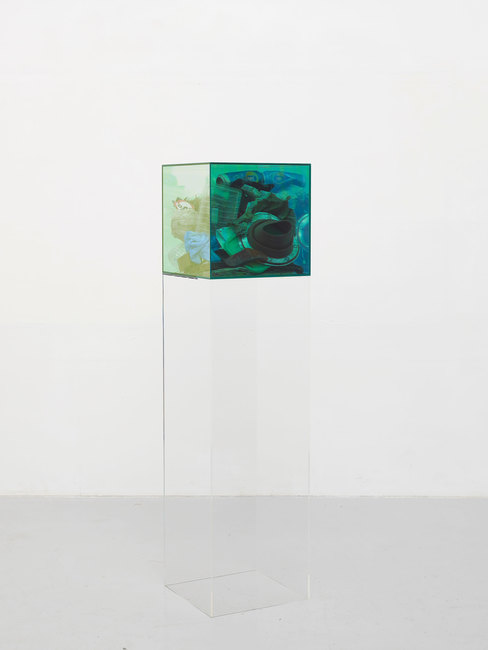Exhibitions2018God is Gone







God is Gone
15 Mar - 19 May 18
Galerie Krinzinger
Gavin Turk’s 6th solo exhibition at Galerie Krinzinger presented rubbish as art. And art as a system of social control. Turk is well known as the mercurial art surrealist, lightly nimble-stepping through his art historical references to inspire a second look and a quizzical frown. His work skips from cultural identity to surrealism often using visual illusions and poetic enigmas to capture the imagination.
At the same time, it quietly celebrates the charm of the irrelevant and the discarded whilst challenging the shifting reality of our contemporary thought. An alternative articulation of Descartes legendary philosophical utterance - I doubt, therefore I think, therefore I am - echoes through the exhibition space.
In the gallery entrance, audiences were confronted by the magical illusion of a Magrittian gateway: an ominous wormhole controlled by a playfully bureaucratic wristband - a prison handcuff or a hospital tag. A crowd controller for gaining entry, but from where to where?
The eponymous canvases entitled Legend and God is Gone are a pair of Trompe l’Oeil conundrums. Religious tablets that could be post-apocalyptic views of our lost generation. Or are they no more than a child’s Sunday school flash cards: humorous instructions to read and remember to think.
The Looking Glass dominated the arched architectural grid in the chamber to the left of the space. Reflecting an image of the audience back at themselves, as in a shop window, the piece reveals the violence of our waste.
Another of the pieces included in the exhibition, Waterfall is a hand-drawn palimpsest - a human mimicking the computer, rather than the other way around. The crazed digits, symbols and cyphers spat from a printer whilst attempting to produce an image of Duchamp’s Waterfall.
A series of deftly framed snapshots capture the insanity of our digital age. With the mass capture and circulation of digital images, the mistakes, errors and digital blurs of a badly held phone camera represent the nauseating excess of our semi-cyborg generation. The images build meaning, reminding us of a half thought. They beguile us, musing on the edge as our minds struggle to grip hold of our reality: with the charm of the unknowable. The scatological fascination of our dysfunctional technologies to be deciphered by an ancestor looking back on the insane speed of progress.
At the end of the gallery shrines to our wasteful excess were installed - agglomerations, clumps and assemblages of cultural waste. The futuristic museum plinths were displayed like sterile sci-fi capsules containing the grubby evidence of our profligacy. With names like PSION and VXACT suggesting a medical or scientific purpose, the planks leaned against the gallery walls alluding to the language of an ancient or future tribe to whom our excreted waste would seem sacred.

























